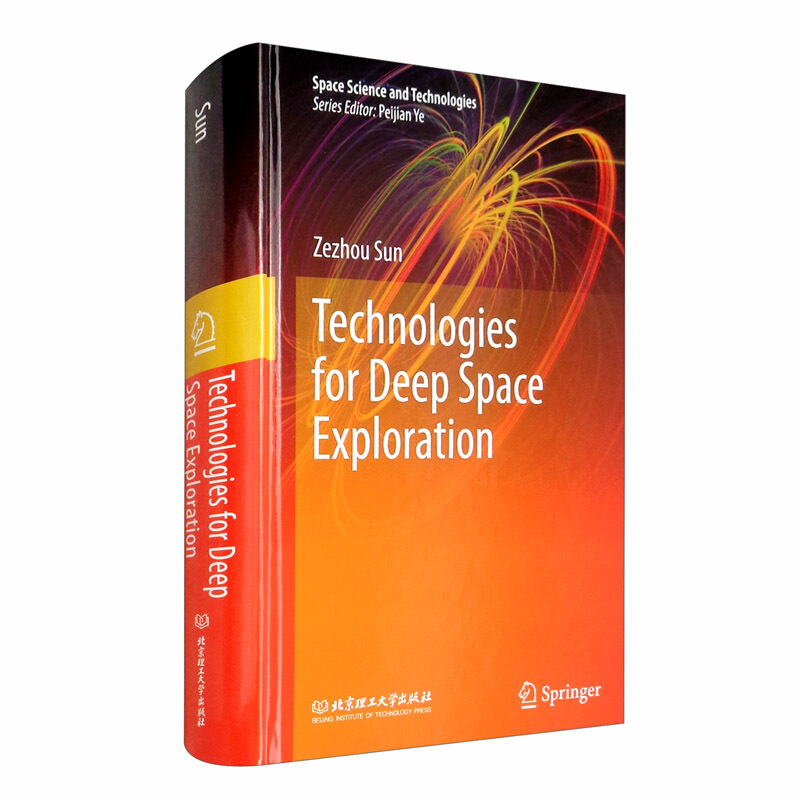
包邮Technologies for deep space exploration

- ISBN:9787568290296
- 装帧:一般胶版纸
- 册数:暂无
- 重量:暂无
- 开本:24cm
- 页数:20,617页
- 出版时间:2020-09-01
- 条形码:9787568290296 ; 978-7-5682-9029-6
内容简介
This book offers readers essential insights into system design for deep space probes and describes key aspects such as system design, orbit design, telecommunication, GNC, thermal control, propulsion, aerobraking and scientific payload. Each chapter includes the basic principles, requirements analysis, procedures, equations and diagrams, as well as practical examples that will help readers to understand the research on each technology and the major concerns when it comes to developing deep space probes. An excellent reference resource for researchers and engineers interested in deep space exploration, it can also serve as a textbook for university students and those at institutes involved in aerospace.
目录
1.1 The Significance of Deep Space Exploration
1.2 Overview of Deep Space Exploration Development
1.2.1 Overview of International Deep Space Exploration Development
1.2.2 Overview of Deep Space Exploration Development in China
1.2.3 Development Trends of Deep Space Exploration
1.3 Future Development Requirements for Deep Space Exploration Technologies
1.4 Prospects
References and Related Reading
2 Characteristics of Deep Space Environment and Corresponding Impact
2.1 Introduction
2.2 Geospace Environment
2.2.1 Main Geospace Environment Characteristics for Deep Space Probes
2.2.2 Impact of Geospace Environment on Deep Space Probes
2.3 Lunar Space Environment
2.3.1 General
2.3.2 Lunar Radiation Environment and Impacts
2.3.3 Lunar Atmosphere and the Impact
2.3.4 Lunar Soil/Lunar Dust and Impacts
2.4 Space Environment of Mars
2.4.1 Overview
2.4.2 Mars Radiation Environment and Its Impact
2.4.3 Impact of Mars Atmospheric Environment
2.4.4 Impact of Mars Dust Environment
2.4.5 Landforms on the Surface of Mars
2.5 Space Environment of Jupiter
2.5.1 Overview
2.5.2 Jupiter's Strong Magnetic Field Environment
2.5.3 Strong Radiation Environment of Jupiter
2.5.4 Jupiter Plasma Environment
2.5.5 Jupiter Atmosphere
2.6 Space Environment of Venus
2.6.1 Overview
2.6.2 Magnetic Field of Venus
2.6.3 Venus Atmosphere
2.6.4 Venus Surface Topography
2.7 Other Interplanetary Space Environments
2.7.1 Interplanetary Environment
2.7.2 Asteroid Environment
2.7.3 Comet Environment
2.8 Outlook
References and Related Reading
……
3 System Design Technology
4 Technology of Orbit Design
5 Payload Technology
6 Guidance, Navigation and Control Technology
7 Atmospheric Braking Technology
8 TT&C and Communication Technology
9 Thermal Control Technology
10 Propulsion Technology
11 Power Supply Technology
12 Autonomous Management and Tele-operation Technology
13 Mechanism Technology
14 Ground Test Verification Technology
作者简介
孙泽洲,研究员,博士生导师,航天深空探测领域专家,现任职于中国空间技术研究院总体部,“嫦娥四号”、火星探测器总设计师。主要从事深空探测项目论证、探测器总体设计等方向的研究工作。主持研制“嫦娥四号”,并成功完成了人类探测器首次月背软着陆和巡视探测。曾获国家科技进步特等奖、国防科学技术奖特等奖等多项奖励,荣获全国五一劳动奖章、中国青年五四奖章、中国青年科技奖、光华工程青年奖,入选“万人计划”科技创新领军人才。在国内外期刊发表论文30余篇。
-

金属切削液配方与制备手册
¥144.5¥198.0 -

石油石化领域理化检测测量不确定度评定及实例汇编
¥29.8¥48.0 -

图解新能源汽车 原理·构造·诊断·维修
¥89.6¥128.0 -

服装裁剪入门及板样70例
¥11.3¥19.9 -

公路路基设计规范
¥54.9¥98.0 -

袖珍实用色谱
¥13.1¥45.0 -

小家电使用与维修
¥4.3¥11.5 -

再话土力学
¥54.9¥98.0 -

低空无人机集群反制技术
¥82.6¥118.0 -

奋楫笃行,臻于至善——广州公交服务再提升探索与实践
¥57.0¥80.0 -

中国近现代超级工程地理分布图
¥16.8¥20.0 -

矿产勘查项目设计实习指导书
¥24.0¥32.0 -

孟山都的转基因之战
¥39.0¥69.0 -

汽车故障综合诊断技术
¥65.6¥95.0 -

汉服经典纹样与配色图鉴
¥117.6¥168.0 -

高速列车空气动力学设计技术
¥102.4¥128.0 -

步步图解万用表使用技能
¥34.8¥49.0 -

新型电力系统与新型能源体系
¥27.5¥98.0 -

基于整体性治理的农村水环境共治模式研究
¥61.8¥78.0 -

高定旗袍制版技术
¥52.0¥98.0













